Junkyard Find: 1977 Buick Skylark Sedan

Starting with the 1962 model year, GM sold cars on the new compact rear-wheel-drive X Platform (thus dooming the Corvair long before Ralph Nader had any say in the matter). In the United States, these cars were Chevrolet Chevy IIs and Novas; north of the border, they were Acadians. Eventually, the platform got bigger and the other GM car divisions jumped in for a piece of the action. Buick sold these cars from the 1973 through 1979 model years, and I've found one of those Buickized Novas in a boneyard near Reno, Nevada.

At first, Buick badged these cars as Apollos. Starting with the 1975 model year, the Apollo four-door got the Skylark name (which had been used on midsize A Platform cars until 1972), and then Buick ditched the Apollo badging completely for 1975 and went Full Skylark.
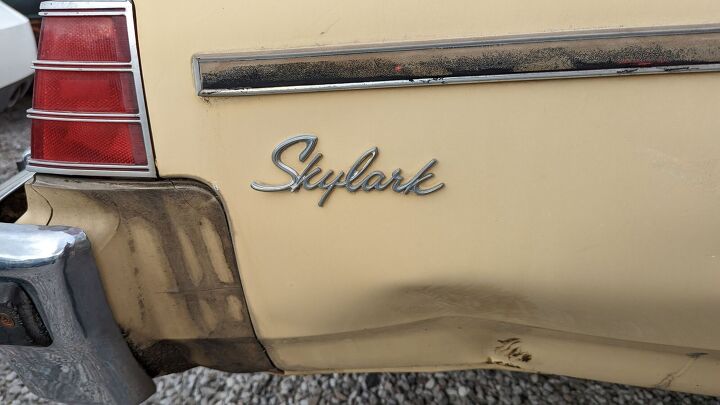
The Skylark name started out, as so many model names do, as a trim-level designation for another model. In this case, that car was the 1953 Buick Roadmaster Skylark.

Production of the Nova-based Skylark continued through 1979, after which the name went on a sibling to the Chevrolet Citation (on the new front-wheel-drive X Platform). Then the Skylark moved over to the N Platform (itself derived from the Chevy Cavalier's J Platform), and that's where it remained until the Skylark ingested enough DDT to go extinct in 1998.

The most luxurious of the 1970s GM X-Bodies was the Cadillac Seville, naturally, but the interior of the Buick version still was an order of magnitude nicer than what you got in the Nova. Yes, that's a tilt steering wheel, complete with the wobbly, rattly feel characteristic of GM's tilt columns of the era.

In 1977, the cheapest Chevy Nova sedan with a six-cylinder engine listed at $3,532, or about $17,919 in 2023 dollars. If you wanted an automatic transmission in that Nova (instead of the base three-on-the-tree manual), the cost went up another 289 bucks ($1,466 today).

The 1977 Buick Skylark sedan had an MSRP starting at $3,825, which comes to about $19,406 after inflation. Meanwhile, its Seville sibling (or very distant cousin, if you're one of those Seville lunatics who blows a brain gasket when anyone mentions the relationship of your car to the lowly Nova) cost a terrifying $13,359 ($67,776 in 2023).

Both the Nova and Skylark had base six-cylinder power for 1977, but the Nova had a 250-cubic-inch (4.1-liter) inline engine, while the Skylark got this 231-cubic-inch (3.8-liter) V6.

This engine was rated at 105 horsepower and 185 pound-feet, while the Nova's Turbo-Thrift (sadly, GM was no longer using that name by 1977) made 110 horses and 195 pound-feet. At least the Buick V6 finally received an "even-fire" crankshaft for 1977, making it shake a lot less than its predecessors.

Though Pontiac 301 and Buick 350 V8s were available as '77 Skylark options, the original purchaser of this car stuck with the base engine in order to free up some clams for an automatic transmission ($389, or $1,974 now) and this single-speaker AM radio ($75, or $381 today). The "wood" dash trim appears to be standard equipment.

Here's something the Nova never got: Ventiports! Sadly, the V8-equipped 1977 Skylarks didn't get four-hole Ventiports.

No tachometer. No clock. 55 mph speedometer.

Two of its hubcaps stayed on until the end.

This being a Nevada car, there's not much rust. The worst of the corrosion is around some of the trim.

It wouldn't have taken much to make it a nice driver again, but the four-door X-Bodies don't have much of an enthusiast following. Next stop: The Crusher.
The Buick of Small Cars.
[Images: The Seller]
Become a TTAC insider. Get the latest news, features, TTAC takes, and everything else that gets to the truth about cars first by subscribing to our newsletter.
Latest Car Reviews
Read moreLatest Product Reviews
Read moreRecent Comments
- Jagboi The Canadian Mark VI's had the "Electronic fuel injection" badge on the side, but had the Ford Variable Venturi carb. The Canadian brochure for these cars does not have the portion about EFI that the US brochures have. A bit of false advertising for sure.I've seen a number of these cars up to 1983 and none of the Canadian market cars had EFI. The US cars had a crank triggered ignition systenm, the Canadian cars had the Duraspark just like the carbed Ford and Mercury Panthers.
- Syke Back when BMW actually made ultimate driving machines.
- Alan Many Ford designs that are manufactured in China are designed in Australia. Ford just fired hundreds of engineers. That only leaves engineers to keep on designing the Rangers, Bronco, etc.
- Alan Big Al,Seems the author has confused horsepower and kilowatts. Check out what the Aussie Ranger Raptor power output is.The VW Amarok is the 2.3 Eco Boost, I think its about what the author wrote.To be fair, the author may be quoting EU hp.
- Paul Alexander Is TTAC okay? Where are the other articles? Where are the other comments?















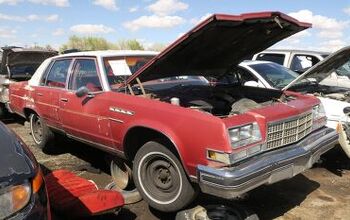
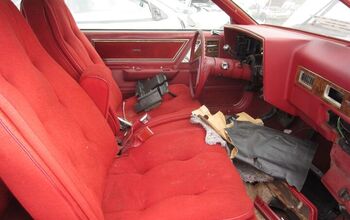
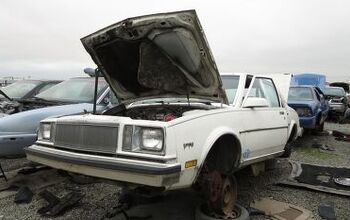

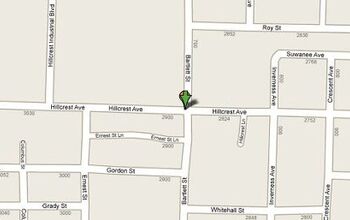

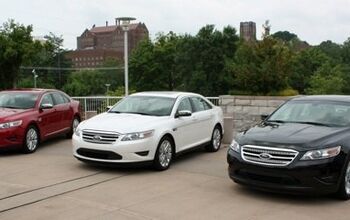
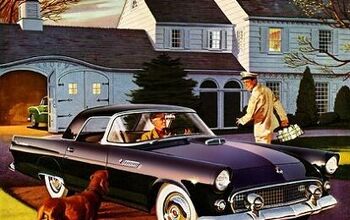




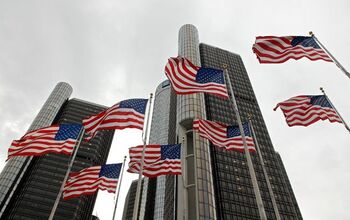

![Nissan Z Proto Spec Markups Are Absurd [UPDATED]](https://cdn-fastly.thetruthaboutcars.com/media/2022/08/09/9505227/nissan-z-proto-spec-markups-are-absurd-updated.jpg?size=350x220)
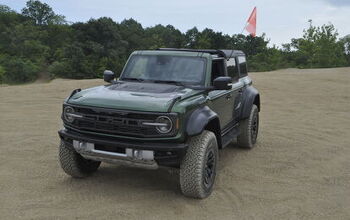
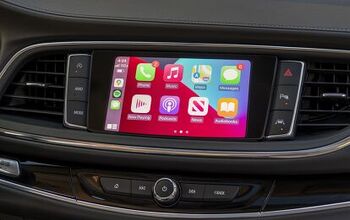
Comments
Join the conversation
What allowed this Buick to survive so long was its 231 V6. Very slow, but very, very reliable. Will keep running and running and running.
I had one in my '83 Cutlass Supreme. Slowest car off the line. Finally gave it up when A/C crapped out and rear oil seal was dripping a quart of oil every 500 miles. Would keep a case of oil in the trunk to top off every other fill up. Sold the car for 3 times what it was worth. Understand a mechanic dropped a V8 in it as the years went by. 🚗🚗🚗
@Art Vandelay
Your vocabulary appears very limited 😒😒